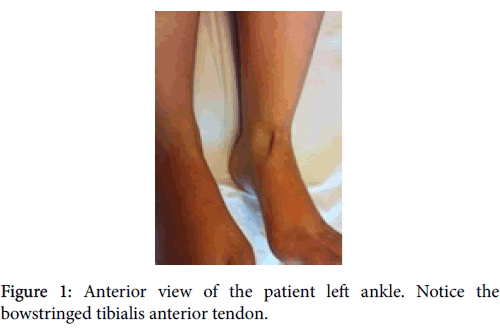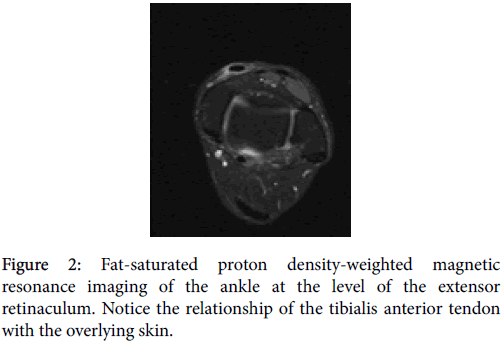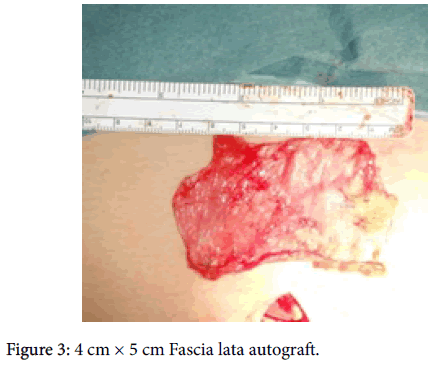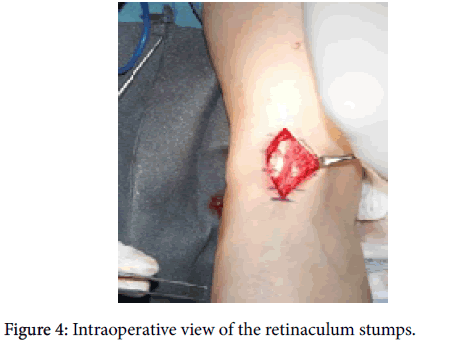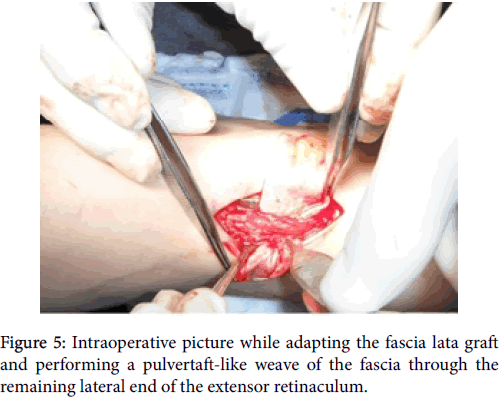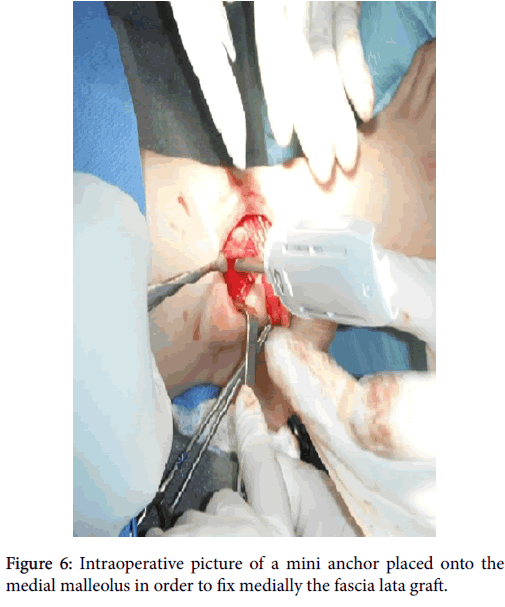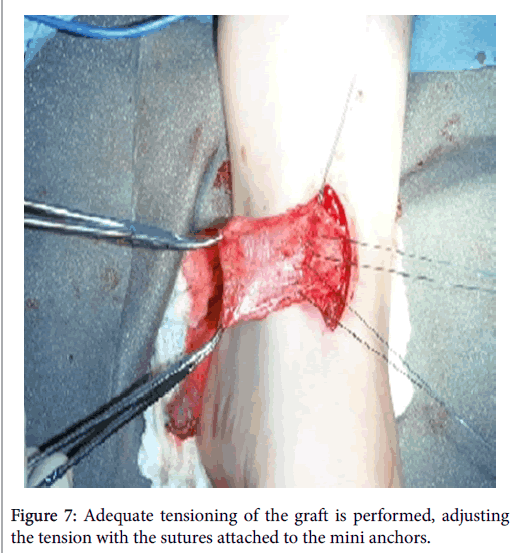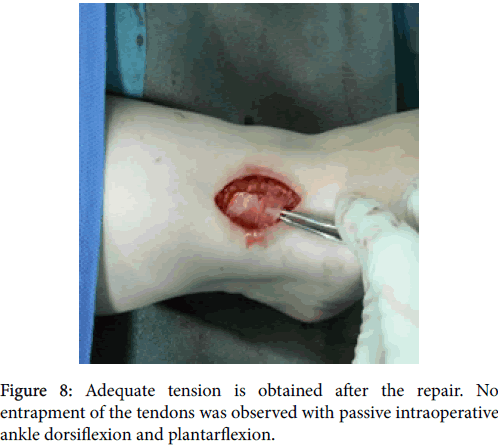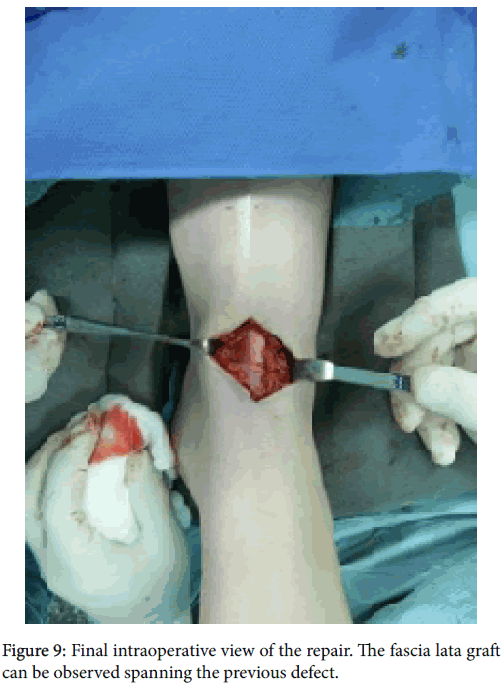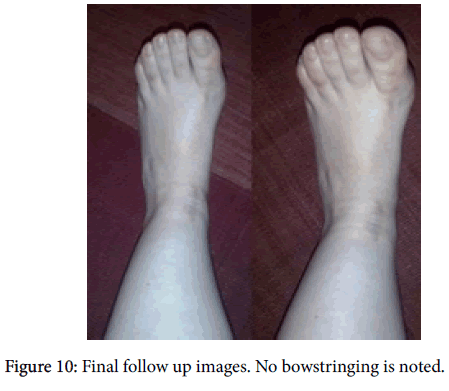Case Report Open Access
Case Report: Spontaneous Rupture of the Ankle Extensor Retinaculum
Emilio Wagner1, Cristian Ortiz1*, Andrés Keller1, Diego Zanolli1, Pablo Wagner1, Pablo Mococain1 and Ximena Ahumada21Foot and Ankle Surgery Department, Clínica Alemana de Santiago - Universidad del Desarrollo, Chile
2Orthopaedic surgery, Hospital Padre Hurtado, Chile
- *Corresponding Author:
- Cristian Ortiz
Chief of Foot and Ankle Surgery Department
Clínica Alemana de Santiago - Universidad del Desarrollo, Chile
Tel: 56994344038
E-mail: caortizm@gmail.com
Received date: April 25, 2016; Accepted date: November 23, 2016; Published date: November 28, 2 016
Citation: Wagner E, Ortiz C, Keller A, Zanolli D, Wagner P et al. (2016) Case Report: Spontaneous Rupture of the Ankle Extensor Retinaculum. Clin Res Foot Ankle 4:216. doi:10.4172/2329-910X.1000216
Copyright: © 2016 Wagner E, et al. This is an open-access article distributed under the terms of the Creative Commons Attribution License, which permits unrestricted use, distribution, and reproduction in any medium, provided the original author and source are credited.
Visit for more related articles at Clinical Research on Foot & Ankle
Abstract
Spontaneous rupture of the extensor retinaculum of the ankle is a rare condition, only reported a few times in the literature. We present a case report of a spontaneous rupture of the ankle extensor retinaculum, which was reconstructed with a fascia lata autograft, along with a discussion of the literature.
Keywords
Ankle extensor retinaculum; Reconstruction
Introduction
The ankle extensor retinaculum acts as a pulley for the anterior compartment tendons, making their work more efficient and restraining their motion over the anterior aspect of the foot and ankle, avoiding the bowstring effect of the tendons. A rupture of the extensor retinaculum could result in a loss of dorsiflexion power, prominent tendons in the anterior aspect of the ankle and local inflammation due to lack of appropriate tracking or sliding disturbance of the tendons. The spontaneous rupture of the ankle extensor retinaculum has been reported only a few times in the literature [1-3]. Those few cases were reported in patients with some predisposing factors, like being a ballet dancer or during vigorous sport activities, and all of them were ruptures of the inferior part of the retinaculum. We report a case of a spontaneous rupture of the superior part of the ankle extensor retinaculum in a patient with no predisposing factors.
Case Report
A 25-year-old, otherwise healthy female patient was referred to our clinic with a history of right ankle pain present for one and a half years, which was exacerbated with dorsiflexion, which lasted for one and a half years. The patient was a recreational runner and denied any trauma or steroid intake, and she did not complain of ankle instability either. Clinically a tense band was noted in relation to the tibialis anterior tendon, which seemed to bowstring (Figure 1). The local skin presented with a slight erythema and the subcutaneous adipose tissue appeared atrophied, as well as other muscles of the anterolateral compartment on the leg. She had pain related to the tibialis anterior tendon with dorsiflexion, and there was no palpable defect in the extensor retinaculum. She had no ankle instability.
Ultrasound and Magnetic Resonance showed a rupture of the superior portion of the extensor retinaculum, and full integrity of the extensor and dorsiflexors muscles and tendons (Figure 2). The laboratory exams, including rheumatological studies, where non remarkable. The patient failed a two month course of conservative treatment including rest, brace and non-steroidal anti-inflammatory drugs. The patient remained symptomatic, with pain related to the bowstringed tibialis anterior tendon and in the last couple of weeks before the intervention.
Pain in the extensor hallucis longus (EHL) tendon had developed, due to overpulling of the tendon trying to compensate the relative loss in tibialis anterior tendon function. Given failure of conservative treatment and new onset pain to EHL, surgical intervention was recommend. As no objective reason could be found to explain the rupture, he authors felt that a graft was necessary to augment the direct repair of the retinaculum. Because of her young age and the theoretical advantage of using host tissues as graft, we chose a fascia lata graft to use as a reinforcement of the repair. Surgery was performed in supine position, under spinal anesthesia and using a thigh tourniquet. A 4 cm width × 5 cm length fascia lata autograft was harvested from the right thigh (Figure 3).
An ankle anterior approach over the bowstringed tibialis anterior was performed, finding extensive scar tissue and a complete rupture of the superior ankle extensor retinaculum; only the stumps were present, showing a retracted mop-end appearance (Figure 4). Moderate inflammatory reaction around tibialis anterior tendon and extensor hallucis longus was found, but the tendons themselves were intact. Biopsy of the retinaculum stumps and the surrounding synovial tissue was performed. Resection of the scar tissue and regularization of the stumps was performed by sectioning the ends of the stumps until normal tissue appearance.
The retinaculum was then reconstructed using the fascia lata autograft previously obtained. For the lateral attachment, the graft was passed through the remaining native retinaculum in a pulvertaft fashion and rescued laterally over the lateral portion of the remainder tissue, and sutured using a fiberwire N 2 (Figure 5).
The graft was then sutured to the remainder retinaculum on its inferior aspect using vicryl 2-0. Adequate tension of the retinaculum over the tibialis anterior tendon was achieved as it was fixed medially onto the tibia using 3 mini anchors 2.0 mm (Figures 6-9) and reinforced over the tibia and medial malleolus with the remainder tissue. Complete passive range of motion without snapping or bowstringing of the extensor tendons was verified.
The immediately postoperative rehabilitation consisted in nonweight bearing gait using a controlled ankle motion (CAM) orthosis in neutral position. The patient was discharged from the hospital five days after surgery due to difficult pain management.
One month after surgery, she began physical therapy, focused on gaining dorsiflexion, and weight bearing was allowed. Two months after surgery, her active range of motion was 0º-100º without any pain. She used crutches for three months and the Cam Walker orthosis for 4 months.
At the fifth month she was pain free, had 50 degrees of plantar flexion and 20 degrees of dorsiflexion, and was performing all of her pre-injury daily activities, including light sports activities. At the sixth month she had an AOFAS score of 90 points due to mild, occasional pain related to the scar, and a Lower Extremity Functional Score[4] of 80 points. At 1.5 years of follow up, the patient presents with no pain with daily life activities, full range of motion and can jog lightly without any complain. When subjected to impact sports, or extensive physical activities she presents with some discomfort in the area of the repair.
She has not returned to impact sports in a routine fashion, and prefers to keep herself subjected to non-impact sports. At physical examination, there is no bowstringing or snapping over the reconstructed retinaculum (Figure 10). No other physical findings are found.
Discussion
The function of the extensor retinaculum as a pulley for the extensor tendons is essential in order to preserve the strength of the extensor muscles. The extensor retinaculum rupture is a rare condition; although rupture of the retinaculum has been published before, all of the patients had some risk factor, and all of them had ruptures of the inferior portion, none reported rupture of the superior part. The three cases reported were treated surgically due to weakness and pain of the tendons involved. One case reported instability, which is consistent with the literature, as it has been published that the inferior extensor retinaculum stabilizes the ankle and the subtalar joint [5]. Our patient had no instability.
Cadaveric studies have analyzed the anatomy of the inferior extensor retinaculum. The retinaculum is split into two layers in a Yshape manner, defining three compartments that contain tendons and their synovial sheaths: the extensor digitorum longus and peroneus tertius in the medial part; the extensor hallucis longus under both arms of the Y-shape portion; and the tibialis anterior tendon more medially under both arms of the Y [6]. Of the three cases reported, two involved the extensor digitorum longus tendon, and one involved the tibialis anterior tendon.
The fascia lata appears to be a reasonable graft to reconstruct the retinaculum, it is safe, easy to obtain and is sufficiently strong to allow light physical activities in the early postoperative period. In two of the three cases reported in the literature, the retinaculum was repaired. Only one of the three cases was reconstructed, and the reconstruction was done with fascia lata autograft also. They did not document follow up of the patient. Our patient had a good clinical result, with no pain, and was performing light sports activity at 1.5 years follow up, but still with some physical limitations. We will continue follow up on her, as associated inflammatory conditions may appear and provide a better understanding of this pathology.
References
- AkharM, Levine J (1980) Dislocation of extensor digitorumlongus tendons after spontaneous rupture of the inferior retinaculum of the ankle. Case report. J Bone Joint Surg 62:1210-1211.
- ChoJ, Lee WC, Park C (2012) Snapping of the Extensor Digitorum Longus Due to Attenuated Inferior Extensor Retinaculum: Case Report. Foot Ankle Int 33:336-339.
- Tytherleigh Strong G, Baxandall R, Unwin A (2000) Rupture of the ankle extensor retinaculum in a dancer. J R Soc Med93:638-639.
- Binkley JM, Stratford PW, Lott SA, Riddle DL (1999) The lower extremity functional scale (LEFS): scale development, measurement properties, and clinical application. Phys Ther79:371-383.
- WeindelS, Schmidt R, Rammelt S, Claes L, v Campe A, et al. Subtalar instability: a biomechanical cadaver study. ArchOrthop Trauma Surg130: 313–319.
- Abu-Hijleh MF, Harris PF (2007) Deep fascia on the dorsum of the ankle and foot: extensor retinacula revisited. Clin Anat 20: 186-195.
Relevant Topics
Recommended Journals
Article Tools
Article Usage
- Total views: 34400
- [From(publication date):
November-2016 - Aug 29, 2025] - Breakdown by view type
- HTML page views : 33368
- PDF downloads : 1032

